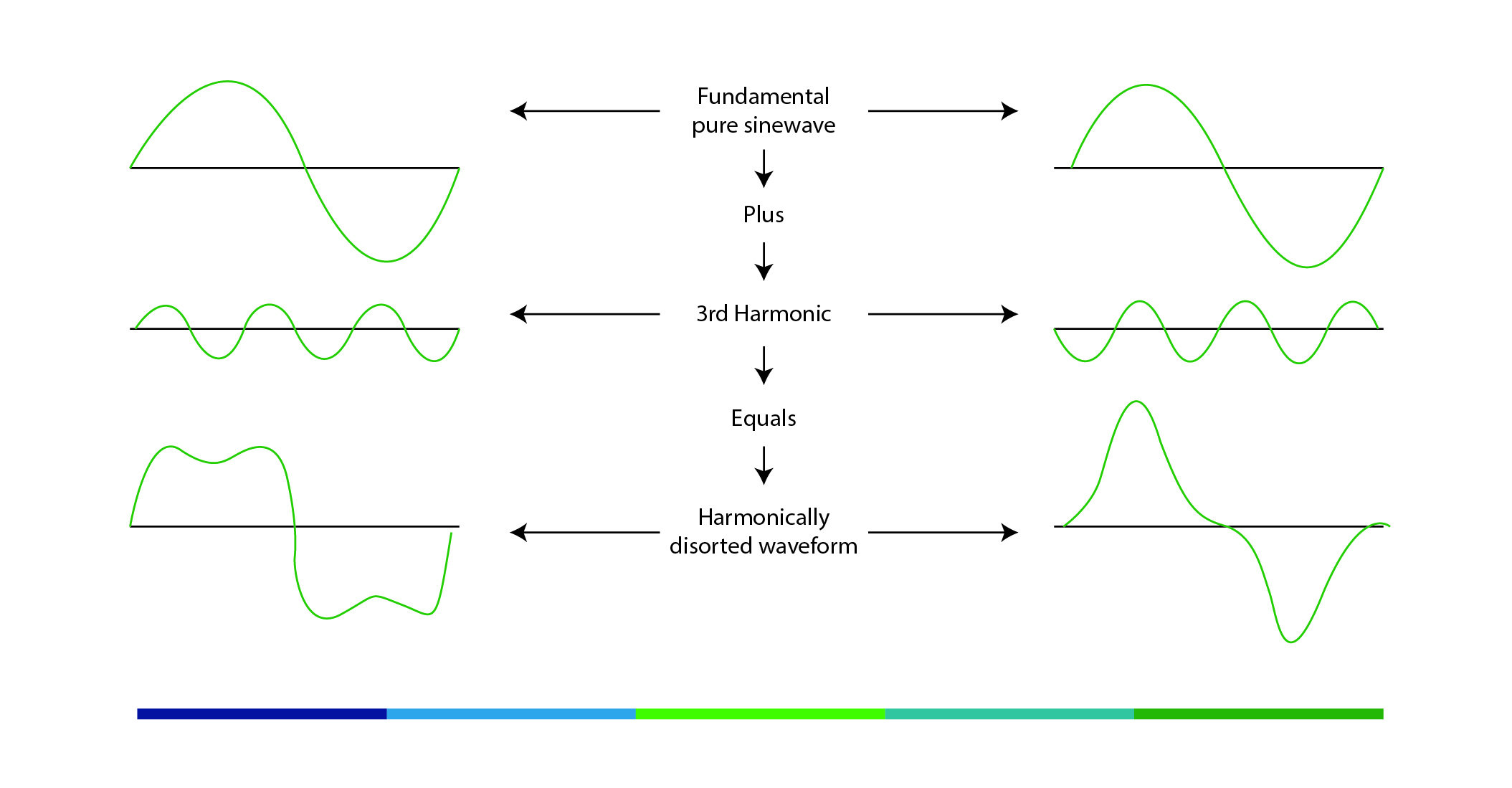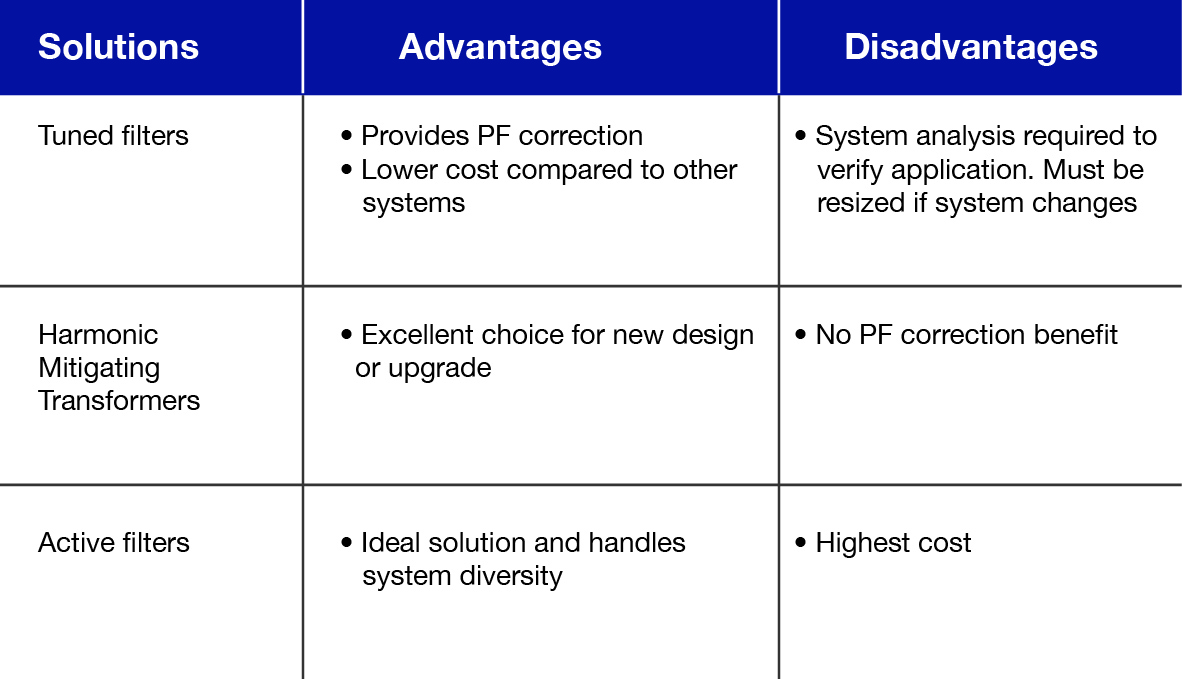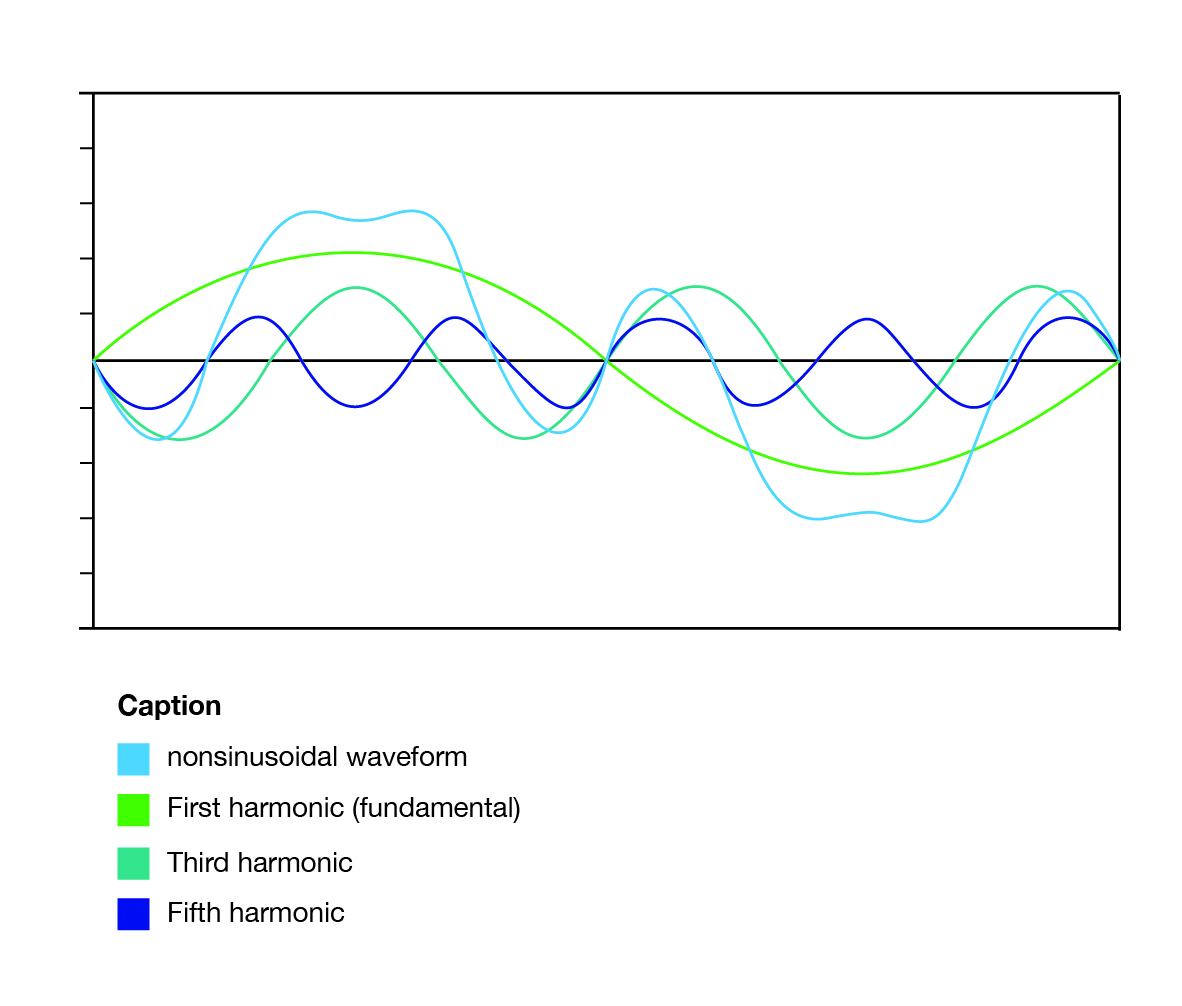Over the past few weeks, we’ve discussed facets of Power Quality in our new series.
We’re just scratching the surface of Power Quality (PQ) to give you a basic understanding on the aspects that contribute to poor PQ, and what you can do about them:
- Understanding Power Quality
- Understanding Power Quality issues and what to do about them:
a) Voltage instability
b) Harmonics
c) Poor power factor
We’re resuming the series by briefly discussing Harmonics…
What are Harmonics?
The Institute of Electrical and Electronics Engineers (IEEE) defines ‘Harmonics’ as sinusoidal currents or voltages with frequencies that are integer multiples of the fundamental frequency at which the power system is designed to operate. Therefore, harmonic distortion occurs when current or voltage waveforms assume non-sinusoidal shape. The waveform corresponds to the sum of different sine-waves with different magnitude and phase. They have frequencies that are multiples of power-system frequency.
To illustrate this, take the example of a 60-Hz system. The harmonic frequencies here are 120 Hz (2nd Harmonic) and 180 Hz (3rd Harmonic), etc. Harmonics combine with the fundamental voltage or current producing a non-sinusoidal shape. The result is a waveform distortion, which is a power quality problem. The non-sinusoidal shape corresponds to the sum of different sine waves with different magnitudes and phase angles, having frequencies that are multiples of the system frequency.

Total Harmonic Distortion
Total Harmonic Distortion (THD) is commonly used as a measure of the effective value of harmonic distortion. Typically, the levels of harmonic distortion can also be characterized by the complete harmonic spectrum with magnitudes and phase angles of each harmonic component.
The causes of harmonics
Harmonic distortion can exist because of classic sources and modern sources.
Examples of classic sources of harmonic distortion:
- Arc furnaces
- Rectifiers
- DC brush motors
- Welding machinery
- General electric machinery that operate above the knee of the magnetization curve (magnetic saturation)
Examples of modern sources of harmonic distortion - All non-linear loads such as:
- Switched mode power supplies
- High efficiency lighting
- Data processing equipment
Harmonics and Transformers
A transformer is an electrical apparatus designed to convert alternating current from one voltage to another. Transformers are designed to operate at a rated frequency, and designed with an overload margin. Typically, loads connected to transformers are non-linear, such as Variable Frequency Drives (VFDs), which generate harmonic currents and voltages. When combined with the non-linear nature of the transformer core, waveform distortions are created in currents and voltages, with the result being power losses.
The harmful effects of harmonic voltages and currents on transformer performance often go unnoticed until an actual failure occurs. In some instances, transformers that have operated satisfactorily for long periods have failed in a relatively short time when plant loads were changed or a facility's electrical system was reconfigured. The effect of harmonics is an increased heating in the transformer, compared to purely sinusoidal operation. Harmonics also result in lower efficiency, lesser capacity, reduced power factor, transformer overload, overheating of circuits, and eventually destruction of equipment.
High harmonic levels generally also result in:
- Increased likeliness of resonance
- Errors in measurements when utilising average reading meters
- Neutral overload in three-phase systems
- Nuisance tripping of thermal protections
- Loss of efficiency in electric machines
Harmonic Solutions
In spite of all the concerns non-linear loads cause, these loads will continue to increase. Therefore, the application of non-linear loads such as variable frequency drives and the systems that supply them will require further scrutiny by the design professional.
The table below depicts a few harmonic solutions along with their advantages and disadvantages.

Trust us for reliable Power Quality solutions
Not sure what to do about your power quality issues? Then give us a call! We will recommend the best products and solutions to assist you in maintaining optimal power quality at your facility!
Click here to chat to one of our experts now!
Follow our PQ Series
We’ll be wrapping up the series next week, by delving into power factor and the correction of poor power factor. Get this and more interesting articles straight to your inbox, click here to subscribe now!


